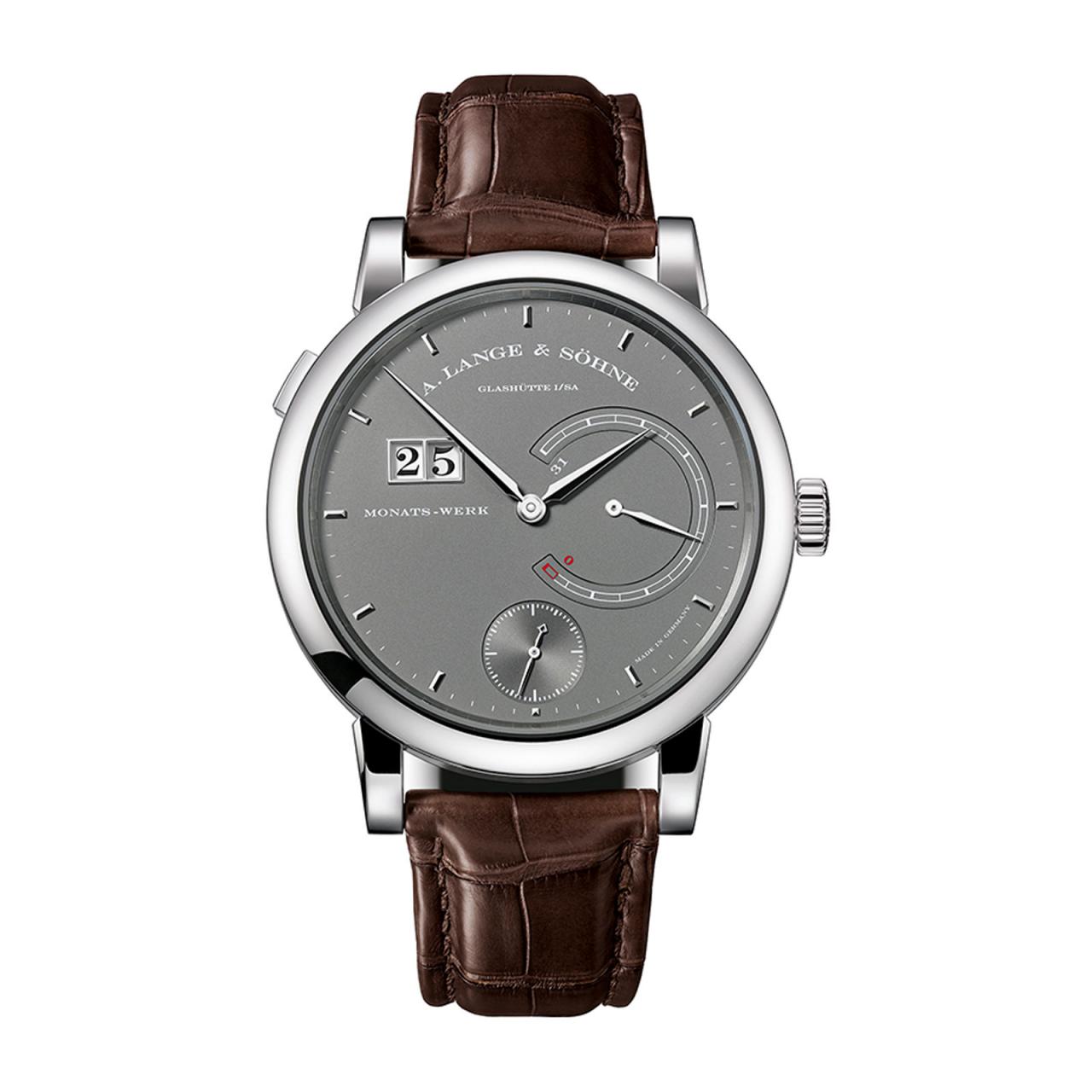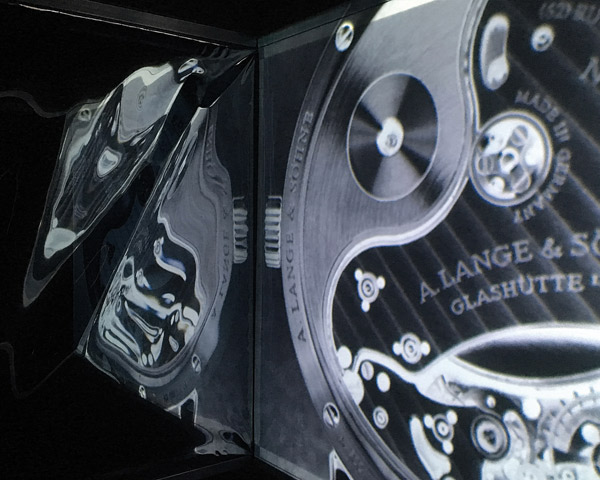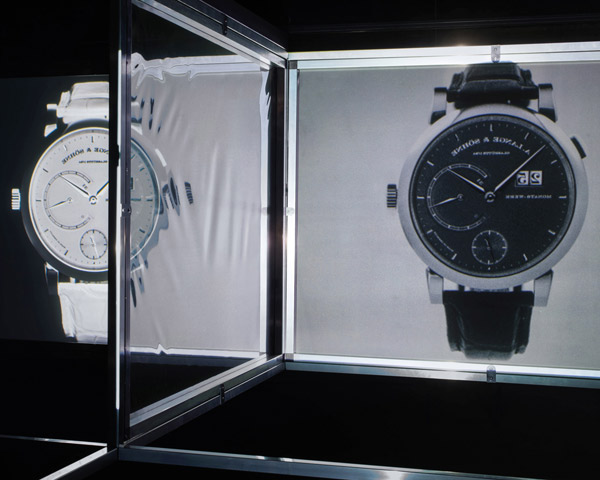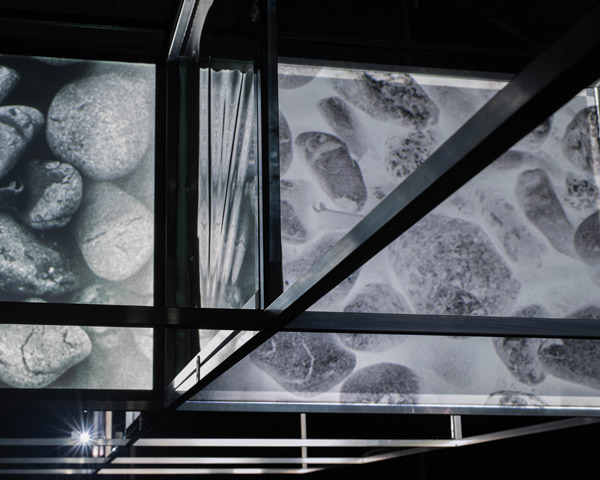How To Buy A. Lange & Söhne – A Journey into grey Replica Buying Guide
The split into black and white gives us a point of reference in a here and now characterised by the uncertainty of the fleeting moment. No colour represents this diversity more than grey. It stands for the multitude of facets of our life and inspires us to keep exploring new perspectives. After all, nothing is either black or white.
The dial facet has lots of other treats for the onlooker, particularly those linked into the perpetual calendar as well as also the rattrapante chronograph. The former consists of 206 parts, nearly a third of their 684 total component count of the L133.1 caliber. Lange’s moon stage is “accurate to 122.6 decades” — mind you, which “accuracy” means that it requires that much time to get the moon phase display to be off by a comprehensive moment. This sort of arbitrary way is the way the accuracy of moon phase displays in watches is usually ascertained, not that anyone actually cares about real practicality beyond its aesthetic and engineering element.The rattrapante chronograph on the other hand is among the most technically impressive and hard complications out there. A few watchmakers I asked told me they find it even more challenging to perform than the usual sonnerie or moment repeater, and definitely a much bigger pain in the neck compared to a perpetual calendar (unless it’s instantaneous and/or further complicated). The two laser sharp chronograph seconds palms rest a hair’s width over one another in their own reset position, with the blue being the rattrapante hand, operated by the pusher in the 10 o’clock position of this circumstance.
Many Lange watches put me in actual pain, I need them so much. If someone has copyrighted that previously, have his lawyer contact mine. Just as it is a heavy weight horological muscle-flexer of a watch, a watch that’s so overdone, its doping has enabled but a couple of small segments in the Lange DNA to endure such abusive treatment. In truth, we’ve observed the combination of a round case, perpetual calendar and moon phase in sub-dials, and a chronograph many times earlier. Many, many times, because that’s how really spoiled we are. The Tourbograph even reveals some skin (beautiful skin, actually) at 6 o’clock to allow you to know not only using its own font selection and ever-so-slightly unique lugs that it’s a Lange.I fully comprehend the value and the awe-inspiring goodness at the bespoke, not-copied-from-anyone-else engineering that is under the hood of this Tourbograph Perpetual, however we aren’t speaking about an uncased movement here, but a complete watch. On that note, anyone who doesn’t tingle at the sight of the movement should seek medical attention, quick! To have a more positive attitude to what unquestionably is a watchmaking masterpiece, then we have to look at the myriads of nice details the Tourbograph offers.
The richness of facets embedded in grey is reflected in the dial of the Lange 31 by A. Lange & Söhne: depending on the incident light, it mesmerises the observer with ever-new shades of grey. It inspired British artist Sebastian Kite to get to the bottom of this ‘achromatic colour’ and its countless nuances that can never be fully deciphered by the human eye.

Lange 31 © A. Lange & Söhne
Now this view is available as the Datograph Auf/Ab; the movement has been improved and a power-reserve screen has been added. There’s also a version with a perpetual calendar, the Datograph Perpetual.The Lange 31 has been named for its power reserve: an astonishing 31 days. These include two stacked barrels, each having a strong mainspring that is 1.85 meters long, a few times longer than a typical mainspring. The barrels are 25 mm across and occupy three-quarters of this movement diameter.With a power book this long, and springs this strong, the amplitude of the balance would decline considerably over time if nothing had been done to maintain it. However, Lange has set an advanced constant-force apparatus between the twin mainspring barrels as well as the escapement. It ensures a constant stream of force, independent of their tautness or slackness of the mainsprings. It accomplishes this with the aid of a helical, pretensioned spring (a so-called remontoir spring), which can be retightened every 10 seconds, also, over the following 10 seconds, delivers energy to the escapement. There are minimal changes in torque during the 10 seconds, however, the energy exerted stays nearly constant on average throughout the 31 days. When that interval has elapsed, an extra mechanism just stops the watch.
Many Lange watches put me in real pain, I need them so much. If a person has copyrighted that already, have his attorney contact mine. Weirdly, the heavyweight horological muscle-flexer A. Lange & Söhne Tourbograph Perpetual ‘Pour Le Mérite’ is not such a Lange, and I have even managed to eventually determine why.Why? Just as it is a heavy weight horological muscle-flexer of a watch, a watch that’s so overdone, its doping has allowed but a few small sections in the Lange DNA to survive such intense treatment. In truth, we’ve observed the mix of a round instance, perpetual calendar and moon phase in sub-dials, and a chronograph many times before. Many, many times, because that is how really spoiled we are. The Tourbograph even shows some skin (lovely skin, actually) at 6 o’clock to let you know not only with its own font choice and ever-so-slightly unique lugs that it is a Lange.I fully understand the worth and the awe-inspiring goodness in the bespoke, not-copied-from-anyone-else engineering that is under the hood of the Tourbograph Perpetual, however we aren’t speaking about an uncased movement here, but a complete watch. On that note, anyone who doesn’t tingle at the sight of the motion should seek medical care, quick! To have a more positive attitude to what unquestionably is a watchmaking masterpiece, then we must look at the myriads of fine details the Tourbograph offers.
Beneath the dial of the white-gold Lange 31 lies the miniature universe of the complicated 406-part movement that stands out not only by virtue of its lavish finish but also with extraordinary technology. The Lange 31 was the first mechanical wristwatch with a power reserve of 31 days. Its patented constant-force escapement assures that a uniform amount of energy is delivered to the oscillator every ten seconds; this keeps the watch running very accurately for an entire month. ‘Nothing beats the accuracy of this watch. Therefore, I looked for another approach to interpret it.’
Ultimately, Sebastian Kite took his inspiration from the grey shade of the Lange 31 dial. To highlight this hue in all of its different aspects, he built a three-dimensional installation with metal frames, steel cables and mirror foils.

Sebastian Kite chose the 16 mm cinematic film format as the medium for his exploration of grey. ‘The Lange 31 is powered by two springs, each with an incredible length of 1.85 metres. To pay tribute to this technical feat, I decided to work with a spring-wound Bolex camera.’ For Sebastian Kite, this camera was the ideal tool for visualising the spectrum of possible grey shades. To achieve the goal, the artist first had to break out of his habitual surroundings. He travelled to Cornwall and found the ideal backdrop for a moving picture inspection there. It was an encounter with a fissured and gruff landscape interspersed with surreal ruins reminiscent of bygone epochs.

The dial side has lots of other treats for the onlooker, namely people connected to the perpetual calendar as well as also the rattrapante chronograph. The former is composed of 206 parts, nearly a third of their 684 total element count of this L133.1 caliber. Lange’s moon phase is “accurate to 122.6 years” — mind you, that “accuracy” means that it requires that much time to get the moon phase screen to be off with a comprehensive moment. This form of arbitrary way is how the precision of moon phase displays in watches is usually ascertained, not that anyone really cares about actual practicality beyond its aesthetic and technology element.The rattrapante chronograph on the other hand is among the most technically impressive and challenging complications on the market. Some watchmakers I asked told me that they find it even more difficult to do than a sonnerie or moment repeater, and definitely a much bigger pain in the throat compared to a perpetual calendar (unless it’s instantaneous and/or further complicated). The two laser sharp chronograph seconds palms rest a hair’s width over one another in their own reset position, with the blue being the rattrapante hand, operated by the pusher at the 10 o’clock position of this case.
By streaming the cinematic images into a spatial installation, the artist accessed another way to visualise his intensive involvement with the theme. Now, positive and negative reflections interact with mirrored moving pictures to produce ever-new images and nuances.
Landscape structures become fascinating surfaces. Overlapping reflections and projections transform ruins into abstract geometric shapes with countless grey spectra. At this point, Sebastian Kite’s installation plays with the power of cultural legacies. What do we expect to see? And what do we actually see? A visual experience that gently escorts us outside habitual patterns of perception and leaves us inspired. ‘Fortuitous coincidences show us the grey zones.’ The game of serendipity is emulated by the installation as well: depending on the observer’s perspective, the brightness of the projections changes, making them either permeable or impenetrable. This precise and complex artistry comes alive in random moments.

By projecting the totality of impressions gathered outdoors into the inside of his exhibition and then reflecting, distorting and fusing them with the Lange 31, Sebastian Kite blended the multitude of variations and hues that lie between black and white into a vision of timeless aesthetics.
In each moment of our life, the past meets the future and enigma confronts clarity. ‘Let us be fearless in this encounter and boldly contemplate all facets, all nuances.’




